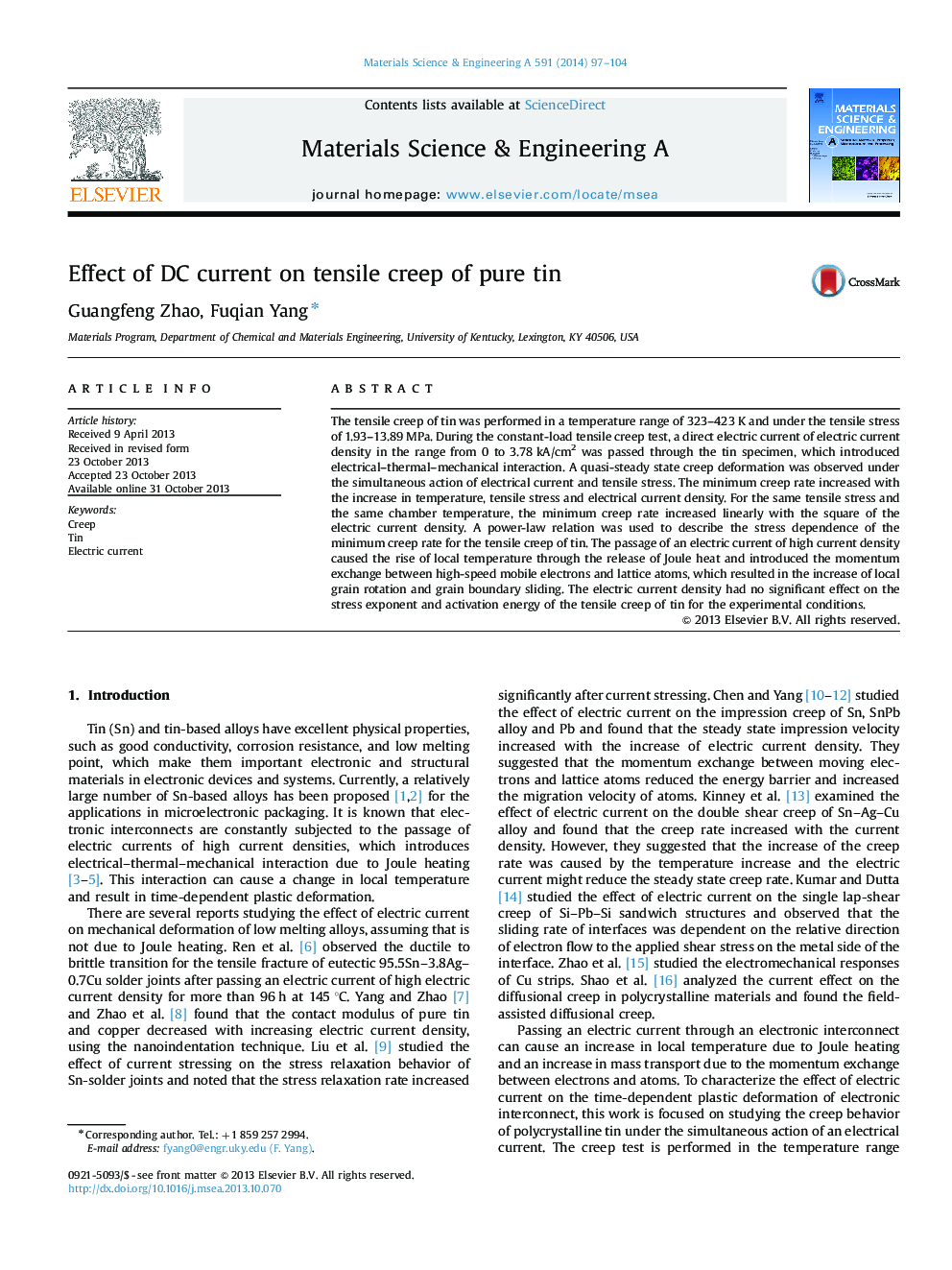| Article ID | Journal | Published Year | Pages | File Type |
|---|---|---|---|---|
| 1575542 | Materials Science and Engineering: A | 2014 | 8 Pages |
Abstract
The tensile creep of tin was performed in a temperature range of 323-423Â K and under the tensile stress of 1.93-13.89Â MPa. During the constant-load tensile creep test, a direct electric current of electric current density in the range from 0 to 3.78Â kA/cm2 was passed through the tin specimen, which introduced electrical-thermal-mechanical interaction. A quasi-steady state creep deformation was observed under the simultaneous action of electrical current and tensile stress. The minimum creep rate increased with the increase in temperature, tensile stress and electrical current density. For the same tensile stress and the same chamber temperature, the minimum creep rate increased linearly with the square of the electric current density. A power-law relation was used to describe the stress dependence of the minimum creep rate for the tensile creep of tin. The passage of an electric current of high current density caused the rise of local temperature through the release of Joule heat and introduced the momentum exchange between high-speed mobile electrons and lattice atoms, which resulted in the increase of local grain rotation and grain boundary sliding. The electric current density had no significant effect on the stress exponent and activation energy of the tensile creep of tin for the experimental conditions.
Keywords
Related Topics
Physical Sciences and Engineering
Materials Science
Materials Science (General)
Authors
Guangfeng Zhao, Fuqian Yang,
